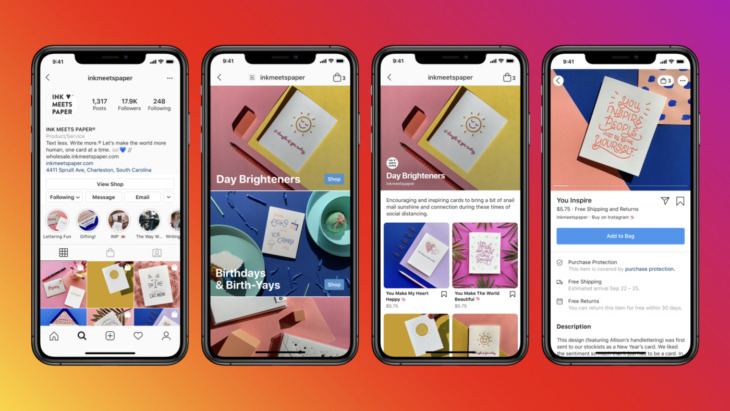As retailers of all sizes are challenged to reinvent their business model in the wake of the COVID-19 crisis, Instagram and Facebook have launched a new feature aimed to help brands drive revenue through the two social media platforms.
Instagram has been developing its product offering for retailers as a major focus over the past year. They have already introduced shoppable posts, which allow brands to showcase particular products within their Instagram feed, linking through to the product page on the brand’s own website. Now, they’ve taken the next step and made it possible for consumers to purchase directly from a retailer on Instagram without leaving the app.
https://www.instagram.com/p/CAYNFZbn-GG/
The new Instagram Shops feature has been made immediately available to all retailers, and over a million brands had already signed up ahead of its launch, demonstrating immense demand. However, many brands will be watching with interest to see what impact it has on the revenue of the early adopters before deciding whether to give it a try themselves.
Based on the information available so far, we can see both advantages and disadvantages of taking Instagram and Facebook up on their offer. Its strength will be in encouraging impulse buys, as the in-app sales functionality removes the friction from the consumer’s purchasing decision. This could work particularly well for young consumers who, our research has shown, prefer shopping in apps to mobile or desktop web. It will also be a great marketing tool, acting as a showcase for a selection of key products. For smaller businesses that don’t already have an ecommerce offering, it could be a simple way to get set up with minimal tech knowledge needed.
However, online retailers may have concerns around retaining control of their customer journey. While they can use images and copy to give their Instagram or Facebook store the look and feel of their brand, there will inevitably be limits to customisation, compared to what could be achieved on their own ecommerce site. Sending customers to an Instagram or Facebook store over a brand website would also hinder opportunities for retargeted advertising and email subscription, both important parts of most ecommerce brands’ marketing strategies.
The dilemma retailers are considering here is similar to the one digital publishers faced back in 2015 when Facebook launched Instant Articles and encouraged publishers to host their content directly on Facebook rather than their own domain, in return for an incentive of monetisation. That initiative is today considered a failure, but with the learnings Facebook gained from the experience, we can hope they will approach this change in their relationship with retailers with a greater understanding of what will make the brands’ sacrifices worthwhile.
To keep up with the latest news and insights on retail, ecommerce and the student market, sign up to our weekly newsletter.














